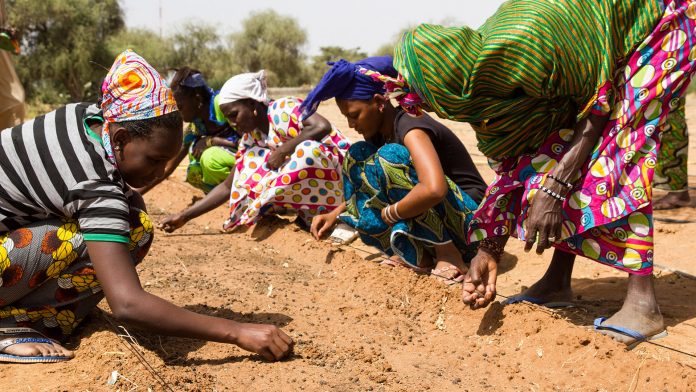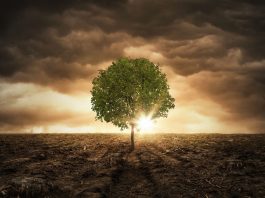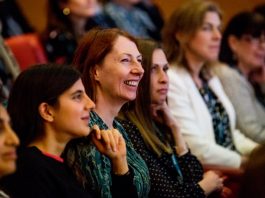CNRS’s Deborah Goffner spoke to The Innovation Platform’s International Editor, Clifford Holt, about how desertification in the Sahel is being addressed.
The impacts of climate change vary from region to region. In certain parts of Africa, desertification is a particular challenge. However, there are also anthropogenic causes, too. It is, therefore, crucial to better understand the social-ecological systems that are in place – and, indeed, how they have reached their current state and, moreover, what the future scenarios might look like – if the challenge is to be properly tackled.
Deborah Goffner, from the CNRS International Research Unit Environment, Health and Societies (UMI-ESS) has been involved in projects designed to tackle desertification in the Sahel for some time – including in the Great Green Wall initiative – and is therefore well-placed to comment on the importance of this work and the way it is, and should be, approached.
Goffner spoke to The Innovation Platform’s International Editor, Clifford Holt, about some of these initiatives – past, present, and future – emphasising how, when designing landscapes in a way that is meaningful for the people who live there, the incorporation of local knowledge is paramount.
Could you begin by outlining the Great Green Wall initiative – its background, what it hoped to achieve, and its successes/evolution (thus far)?
The Great Green Wall (GGW) was adopted by African heads of state in 2007. At first, it was a very top-down, highly political reforestation project that aimed to combat desertification in the Sahel. The original plan was to plant a wall of trees more than 7,000 kilometres long and 15 kilometres wide across the 11 founding countries that signed the initial agreement. This, however, was met with no small degree of scepticism, not least because some of the arguments behind it were based on scientific misconceptions, including the fact that the Sahara Desert was actually ‘descending down’ across the African continent. The reality is that desertification in the Sahel is the result of a combination of climate change, yes, but also of equal importance are the anthropogenic causes. For example, the settling of traditionally nomadic, livestock herders since colonial times has participated enormously in exerting enormous pressure on the precious natural resource base. If you combine human decisions such as these with climatic realities such as the severe, recurrent droughts in the Sahel since the 1970s, the result is desertification.
The original objectives of creating environmental and human well-being along the GGW path perhaps haven’t changed that much, but the way to achieve them has. The GGW gradually evolved into more of a mosaic of contiguous landscape-scale actions which don’t necessarily have to be exactly in the originally-proposed path and don’t necessarily involve tree planting. The GGW can be seen as more of an umbrella term that accounts for several large-scale social-ecological restoration initiatives in currently more than 20 countries throughout Africa. Also, the fact that it has moved away from the idea of uniquely reforestation means that making the right natural resource management decisions in the right place has become infinitely more challenging, and the need to incorporate different types of knowledge, including for example, scientific, traditional, and institutional knowledge, is a strict requirement if the GGW is to reach its ambitious objectives.
And in terms of success and failure, as a new publication by the United Nations Convention to Combat Desertification entitled The Great Green Wall: Implementation Status and Way Ahead to 2030 has highlighted, some countries have made more progress than others in implementing actions and achieving their goals. To be honest, although some progress has been made, the achievements fall way short of expectations, but I certainly still believe that the idea of a united, African Union-driven GGW is a positive step to combat the socio-ecological challenges in the Sahel.
As a result of this very important publication, and the critical take on the GGW’s successes and especially shortcomings, I am still optimistic for the future of the GGW as it is now recognised by all that deep changes are necessary for the way forward if the GGW will achieve its aims, namely environmental and human well-being.
What was the Future Sahel project designed to achieve? What was your role? What challenges did you experience?
I co-ordinated the Future Sahel project, which came to a close at the end of 2019. It was funded by the French National Research Agency (ANR). The idea was to provide pragmatic sets of data that would help the GGW initiative to make the most appropriate natural resource management decisions in the different zones along the GGW path. Landscape-scale actions have to be defined locally; there is no one-size-fits-all, no easy ‘action tool kit’; each set of actions needs to be designed according to the specificities of the social-ecological systems that we are trying to restore or improve.
The fundamental basis of the Future Sahel project is really to better understand these social and ecological systems: how they are configured; defining their different components and how they interact; understanding how that configuration is set up to produce ecosystem services, or how humans benefit from Nature; who manages it; and how it is managed. The current configurations are also affected by events and decisions at different spatial scales, like what happens at both the national and international levels. It is also of the utmost importance to understand social-ecological system dynamics over time, meaning how they evolved and adapted, for example, in response to shocks and stresses at different levels. This can include climate change, the price of basic foodstuffs like rice, or, at the national level, for example, in response to Senegal’s decentralisation politics, which now includes a certain degree of control when it comes to environmental management.
By developing an understanding of how the systems functions and how they have evolved over time, we are better able to imagine and act upon the future. Essentially, systems can conceivably become worse off, stay relatively constant, or become better off compared to their current state. Our goal in Future Sahel was to nudge the current socio-ecological systems along positive trajectories, or ‘desirable futures’, ones where ecosystem services, or humans’ benefits from Nature, would be abundant, diversified, distributed in an equitable way, and be sustainably produced and consumed.
There were different work packages in the Future Sahel project. One focused on how to maximise the biodiversity of the GGW tree plantations. Even though the original objective of planting a wall of trees has been changed, trees still play a vital role in the daily lives of local populations in the Sahel. I felt that maximising biodiversity was a priority because when I first started working in the GGW context in 2011, I was surprised, and even somewhat shocked, to see just one or two tree species being planted in huge plots and devoid of any monitoring system. We decided to establish experimental field trials along the GGW path to determine which tree species could be grown and where. The tree species tested were chosen through ethnobotanical research, meaning we explored what tree species local people actually wanted to see planted back in nature, how they use the different trees, and where they go in the landscape to use them. Our aim is to help design landscapes in a way that is meaningful for the people who live there, and so we need to incorporate local knowledge in land planning strategies.
I work for the CNRS, France but I am also based part-time at the Stockholm Resilience Centre (SRC) as a visiting senior scientist. The Swedish Development Agency, which in recent times has invested quite heavily in SRC, commissioned the SRC to design a diagnostic tool that could operationalise the concepts of resilience in order to make them applicable to solving real-life issues in developing countries. In response to this growing need, the Stockholm Resilience Centre, along with other international partners, developed ‘Wayfinder’ (see: https://wayfinder.earth/), an online platform for resilience assessments that allows users to collectively explore desirable futures for all and paves the way for action pathways to get there. The Future Sahel project was selected to pilot this in Northern Senegal, more specifically in Ranérou along the GGW path. We are very happy because the resulting Wayfinder action plan is currently being put to use in guiding development actions in the region.
It has been a slow progress, though. That being said, most of my scientific colleagues in the Future Sahel project are Senegalese and it has been great to work with them as they utilise their local knowledge as well as their scientific training, and combine them in developing some amazingly creative ideas.
We have also worked closely together to establish coalitions at the local and national levels and, as researchers, we try to bridge the gaps between local aspirations and decision-making at the national level. The Future Sahel project works in a very interdisciplinary way – many different scientific disciplines, including researchers in the life sciences, earth sciences, and social sciences, all working together to solve the ‘wicked problems’ that the Sahel is currently facing. Beyond interdisciplinarity, we can even employ the term ‘transdisciplinarity’, in that our group of interdisciplinary researchers is working closely together with actors outside of academia, in our case the Senegalese National Great Green Wall Agency who are the decision-makers for the GGW in Senegal on the ground. This means that the distance between new knowledge generation and its uptake was minimal in the Future Sahel project.
What do you hope the follow-up to the Future Sahel project will achieve? How will you approach this?
One of the major outputs of the project has been the Wayfinder-based action plan for the département of Ranérou, Senegal in co-operation with both national and local governmental actors as well as civil society. I personally want to follow up on the actions that are currently being experimented in the region with the multi-scale coalitions that have been set up to collectively monitor their progress. This is occurring through a collective, learn-your-way-forward process in order to fine-tune the bottom-up actions identified.
With a group of colleagues based at SRC, we have recently been awarded a €2m research grant from FORMAS (the Swedish government research council for Sustainable Development). This is incredibly exciting and will allow us to continue and scale-out our work in Senegal along the GGW path. The main objective of this project, called ‘Xpaths’, is to operationalise the UN Sustainable Development Goals in the dryland regions of three countries: Brazil, Spain, and Senegal.
For me, working with stakeholders at all levels and from different sectors, including government agencies, NGOs, civil society, and even private companies, is incredibly important and personally very enriching, and I will continue to do that moving forwards.
Deborah Goffner
Research Director
French National Centre for Scientific Research
deborah.goffner@cnrs.fr
www.cnrs.fr/en/cnrs
Please note, this article will also appear in the fourth edition of our new quarterly publication.









